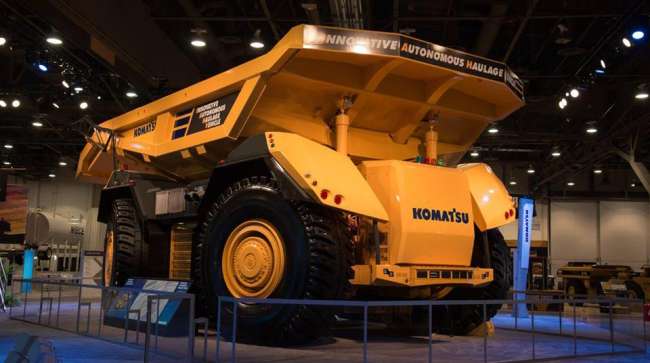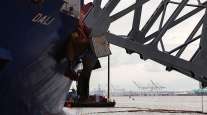Mining Companies Looking at New Fleets, Could Use Autonomous Trucks to Save Millions

Mining companies in Australia, the world’s biggest exporter of iron ore and coal, are poised to approve fresh investments in projects, driven by rallying commodity prices and the need to replace depleting deposits, according to global equipment supply giant, Komatsu Ltd.
“They’re looking at new fleets of equipment,” Sean Taylor, CEO of Komatsu’s Australian unit, said in an interview in Sydney. The miners have to reinvest in output “because otherwise they can’t maintain production at the levels that they’re at,” he said.
BHP Billiton Ltd. could boost annual earnings by about $500 million from mining cost savings by adding more autonomous trucks to cover most of its fleet in the Pilbara iron ore region and about a third of its 350 vehicles at coal operations in the Bowen Basin, Deutsche Bank AG said in a July report.
Australia’s commodity exports are set to hold above A$200 billion ($155 billion) over the next two fiscal years and there’s a pipeline of about A$25 billion of projects approved for construction, according to government estimates. The Bloomberg Commodity Index has advanced more than 12% since slumping to a quarter—century low in January 2016.
“The level of the commodity prices is pretty good now for the miners to consider reinvestment,” Taylor said in the June 29 interview. “It feels like to me we’ve got more discussion around decision making.”
Conversation about greenfield sites, which can take up to 10 years to be approved, have “certainly increased a little bit in the last six months —— whereas before that, it was zero,” he said.
The nation’s top iron ore exporters have already given the go—ahead for new mines amid a potential $8 billion of investment to replace at least 170 million tons of capacity that will be lost as exhausted pits are closed. BHP approved $184 million in initial spending for its A$4 billion South Flank mine in Western Australia, while Rio Tinto Group last year sanctioned development of the $338 million Silvergrass operation.
Slow Recovery
Komatsu, the world’s second—biggest supplier of equipment to the construction and mining sectors, last year agreed to a $2.89 billion deal to acquire Joy Global Inc. in order to add expertise in rope shovels and underground mining equipment. Komatsu and competitors are positioned to benefit from a slow recovery in mining equipment demand, particularly across Asia, according to Bloomberg Intelligence.
Still, even with a rebound in projects, imports of mining equipment into Australia are likely to be at about 50% to 60% of levels in 2012, at the height of an investment boom, Taylor said. Capital expenditure by miners in Australia is forecast for a fifth annual decline in the year to July 2018, the country’s industry department said last month.
With lead times for new equipment —— including trucks to excavators —— expected to lengthen over the next 12 to 24 months and supply of used machinery in decline, miners need to make decisions on adding new equipment, Ernst & Young said in a May report. “Some players will be looking to take advantage of the recent recovery in commodity prices,” the accountancy firm said.




